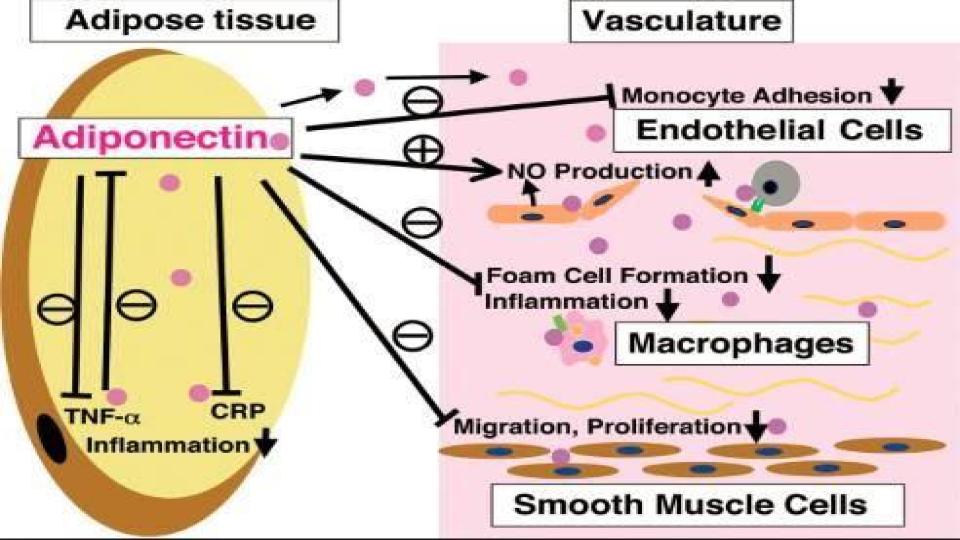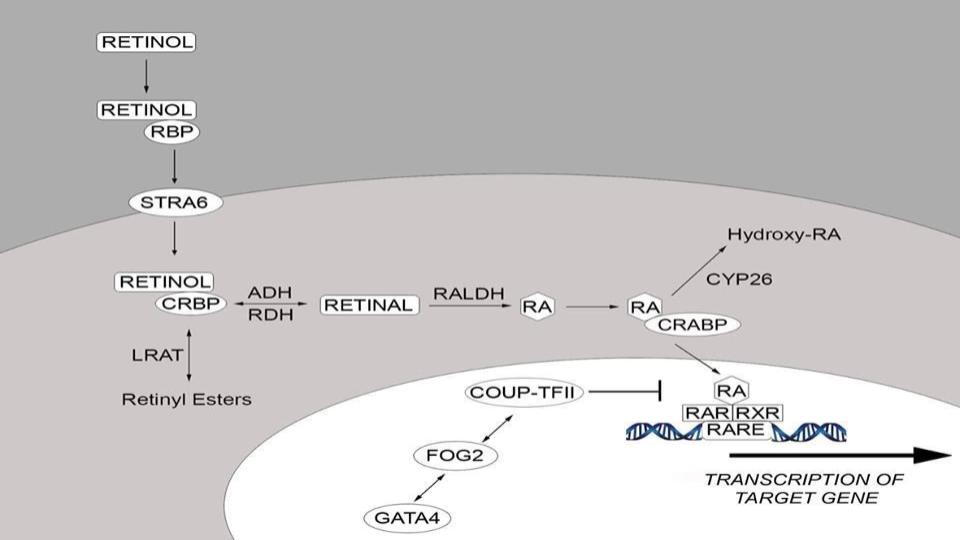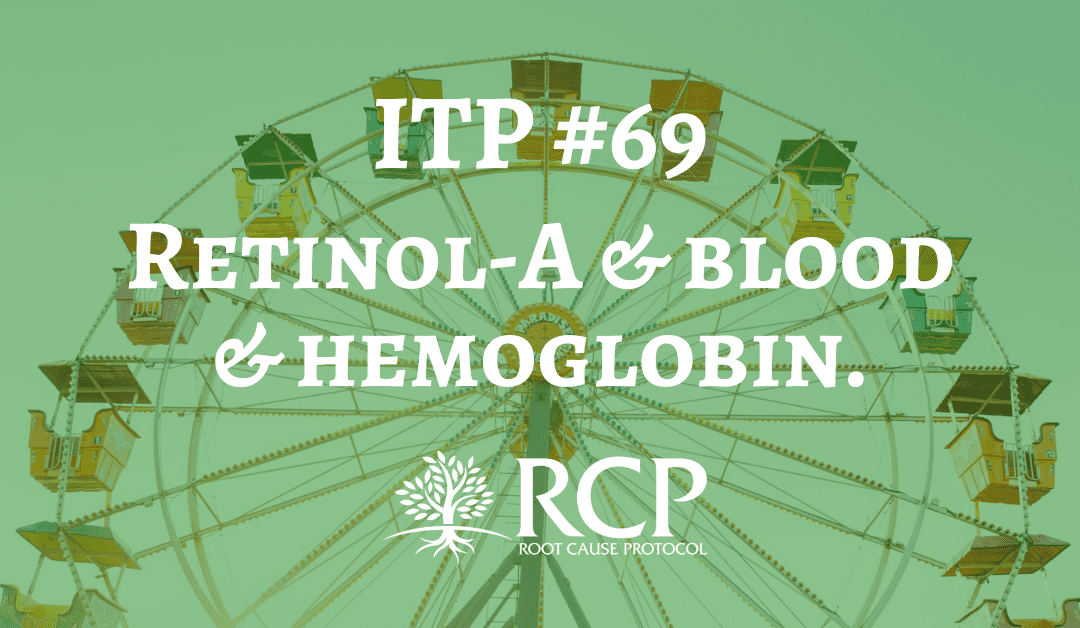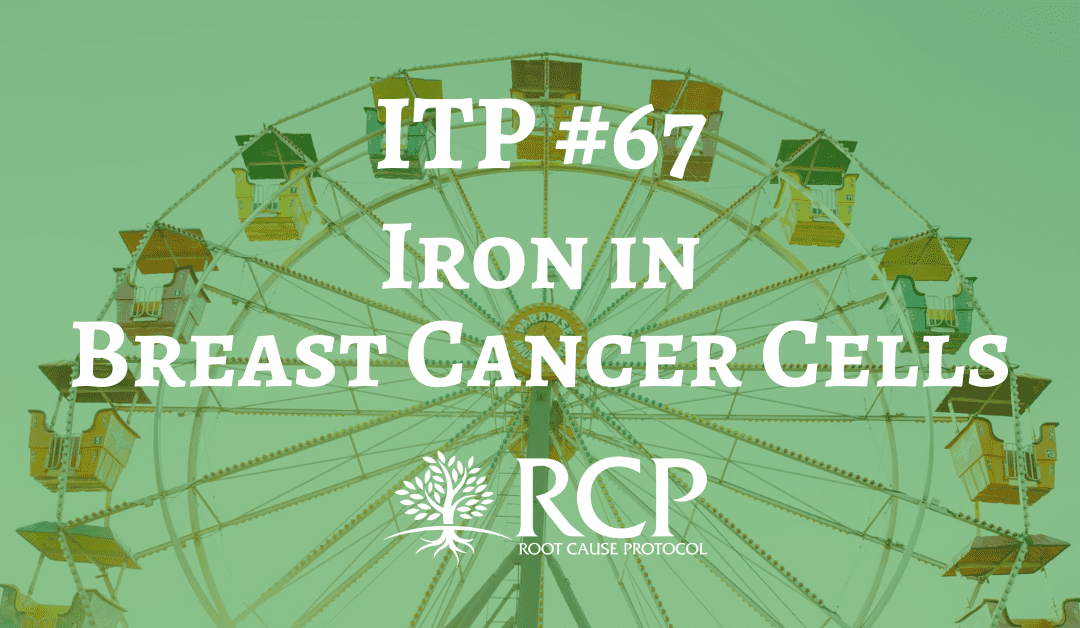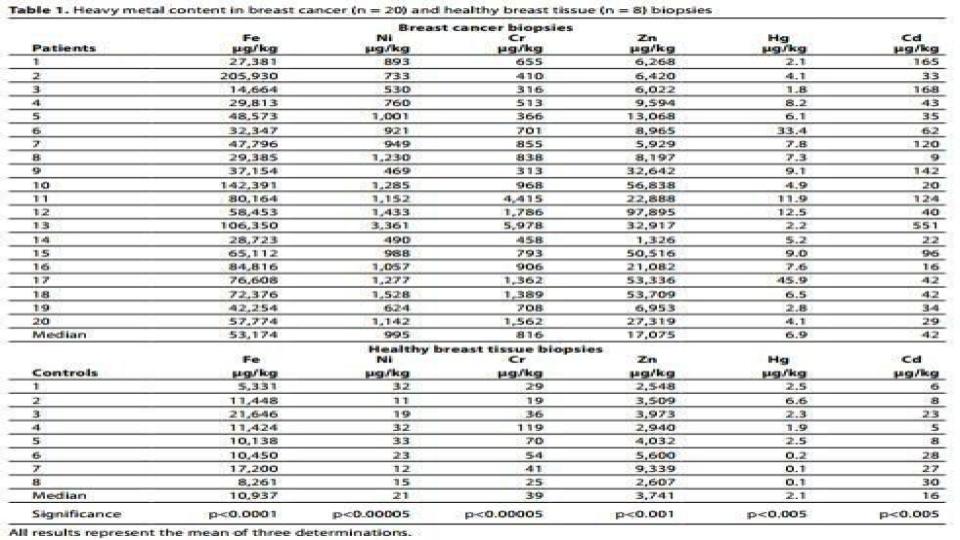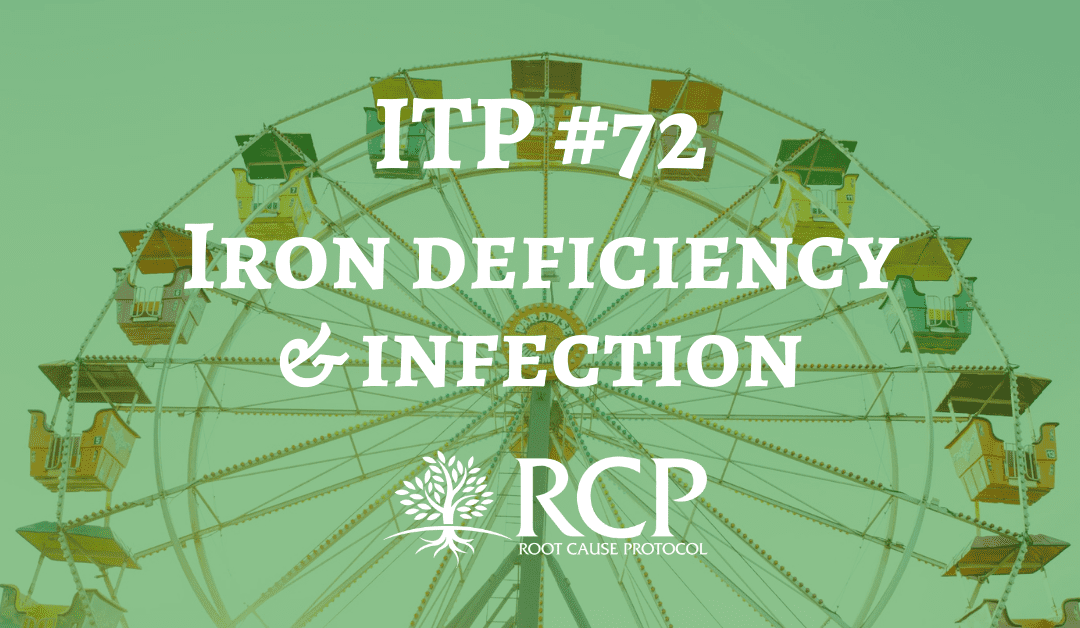
Iron Toxicity Post #72: Iron deficiency is associated with RESISTANCE to infection
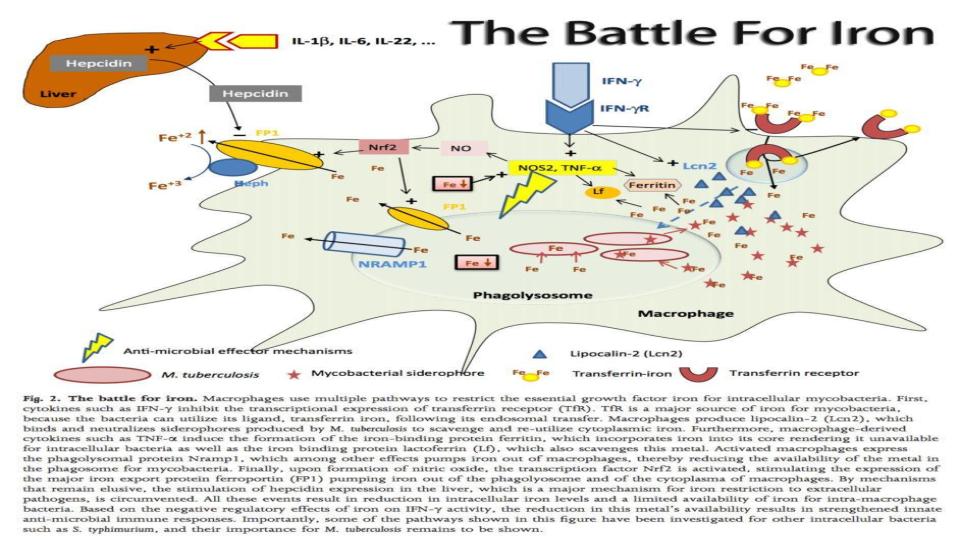
HUH? What did you just say?
Recently, I had just settled down to my companion cup of Joe and started to read some ancient studies (~8-10 yrs old) by noted Harvard Biochemist and Geneticist, Marianne Wessling-Resnick, PhD, when I was struck by two key phrases from these two seminal studies:
“…Iron deficiency is associated with relative resistance to infection, while iron supplements reverse this effect [7-9].”
Source: Wang, L., Wessling-Resnick, M. et al. (2008). Attenuated inflammatory responses in hemochromatosis reveal a role for iron in the regulation of macrophage cytokine translation
“The evidence that supplemental Iron can promote both Infections and chronic inflammatory diseases is clear…”
Source: Wessling-Resnick, M. (2010). Iron Homeostasis and the Inflammatory Response
Please read those two sentences, again.
Please re-read those two sentences, one more time!
Please print out both articles for your doctor, ask them to read those two articles and especially those two sentences, and then ask them this key question:
“Doctor, to what extent could the iron supplements / infusions that I’ve taken be a key contributing factor to the infections that we’ve been trying to treat?”
Not an easy question to ask, but an essential one under the circumstances
For those interested in getting the three sources that inspired that 1st quotation, here they are:
- [7] Murray MJ, Murray AB, Murray MB, Murray CJ. The adverse effect of iron repletion on the course of certain infections. Br Med J 1978; 2:1113–1115. [PubMed: 361162]
- [8] Nyakeriga AM, Troye-Blomberg M, Dorfman JR, Alexander ND, Back R, Kortoak M, Chemtai AK, Marsh K, Williams TN. Iron deficiency and malaria among children living on the coast of Kenya. J Infect Dis 2004; 190:439–447. [PubMed: 15243915]
- [9] Sazawal S, Black RE, Ramsan M, Chwaya HM, Stoltzfus RJ, Dutta A, Dhingra U, Kabole I, Deb S, Othman MK, Kabole FM. Effects of routine prophylactic supplementation with iron and folic acid on admission to hospital and mortality in preschool children in a high malaria transmission setting: community-based, randomized, placebo-controlled trial. Lancet 2006;367:133–143. [PubMed: 16413877]
Folks, please stop taking iron supplements and infusions until you fully understand what is truly going on with your dynamics of your copper<>iron metabolism!
The “battle for Iron” is well-depicted by Fig 2 at the top of this post, and as we’ll see, it is really regulated by copper, and not by iron, and certainly not by iron levels.
At the risk of piling on, let me share yet another citation:
“The hypoferremia [an abnormal deficiency of iron in the blood] of infection was documented in seminal studies by George E. Cartwright, MD [and other colleagues at the University of Utah in the 1940s – 1960’s] who noted a precipitous drop in plasma iron levels upon intramuscular inoculation of canines with Staphylococcus aureus. A similar hypoferremic response was noted upon intravenous injection with sterile turpentine, suggesting that Inflammation, rather than a specific microbial product, was responsible for declining plasma iron levels (Cartwright et al., 1946).”
Source: Cassat, J.E., Skaar, E.P. (2013). Iron in Infection and Immunity
Please note the portrait of George E. Cartwright, MD below – you might say a prayer of thanks for his genius to uncover the truth of anemia – and take note of the key process of ferroxidase to oxidize iron to enable proper iron-loading of transferrin that is profiled on the blackboard behind him.
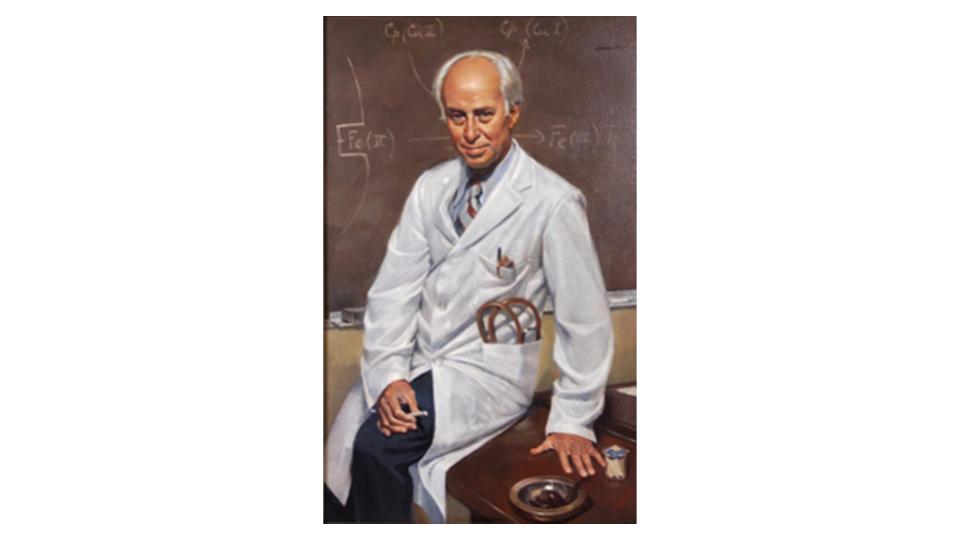
Let me share these truths again:
- 95% of our daily iron requirement (~25mg) comes from our “Iron Recycling System”, the Reticuloendothelial System (RES) as known as. R.E.cycling S.ystem.
- No more than 5% (~1mg) is meant to come through our diet
Yes, only 1mg of our daily iron requirement is meant to come through our mouth.
As you might expect in a post-1984! World, the emphasis today is entirely on “absorbing iron in our diet,” which is in total conflict with, and opposite of, the natural, physiological reality that 95% of our daily iron is meant to be re-assembled & recycled because it’s already inside our body!
Please know that I have had conversations with 3 leading iron researchers (James F. Collins, Ph.D., Robert Crichton, Ph.D., and Sir Douglas B. Kell, Ph.D.) and they all agree: We should only get 1 – 1.5mg/day via oral intake.
I wonder how many Ph.D. iron researchers the typical practitioner has spoken to?
Aside from your typical iron-fortified diet, have you ever checked to see just how much Iron has been added to your daily multivitamin or prenatal?
20mg? 35mg?
The RCP “course record” was set just a few weeks ago with a client from Texas whose obstetrician had her taking 325mg Iron tablets — TWICE a day for an entire month! OMg!
THAT’S 53 YEARS WORTH OF IRON IN ONE MONTH!
She burst into tears when she realized what had happened.
And as you might expect, this iron level of supplementation was based on a ferritin-only blood test, which is the most flawed and dysfunctional blood marker that is used, IMHO.
Again, the focus was on “Iron by mouth,” not “Iron by recycling!”
Now here’s the penetrating truth: Copper regulates iron, keeps it mobilized and ensures that the 95% iron R.E.cycling requirement is met – each and every day!
Yes, I’ve said that before, but I’m always on the look for compelling studies and diagrams that prove these critical points about copper being the key to iron R.E.cycling and iron mobilization.
What is particularly important and especially relevant to our discussion in this post, is the central role that bioavailable copper plays in ensuring that iron presents properly in the blood and “serum iron” is a known measure for that elusive “Miles per Gallon” marker.
Please study the “The Battle For Iron” diagram to see the movement and fluxes of copper that are meant to take place daily that are designed to ensure that iron mobilization does, in fact, take place.
If the bioavailability and biodynamics of your copper are off, then you can assume and bank on your iron being dysfunctional.
Translation: that means the iron will show low in the blood, especially in the key blood marker, serum iron, which is akin to “Miles Per Gallon!” WHY?
Because iron has been recruited (sequestered) to macrophages (“Professional PAC-men” in charge of the iron R.E.cycling S.ystem) to ensure that the iron is not available for the pathogens that hang out in the blood, and furthermore, to prevent this precious iron from enabling their very pathogenic activity.
The “Hypoferremia” (low iron in the blood) that ensues is the very hallmark of “Anemia of Chronic Inflammation,” which I regard as a pandemic on this planet, in large part because of the lack in understanding of copper metabolism.
There is compelling scientific research to back up my assertions, as I share regularly in these posts.
As noted above, we have known about this iron-ic hypoferremic dynamic since Dr. Cartwright and his colleagues (Roeser, Wintrobe, Gruber, Lee, & Nacht) did their pioneering studies in the 1940s.
For those seeking more proof of this Cu-nundrum, here are two clear and compelling studies:
- Wazir, S.M., et al. (2017. “Copper deficiency, a new triad: anemia, leucopenia and myeloneuropathy”
www.ncbi.nlm.nih.gov/pubmed/2904675
- Gulec, S., Collins, J.F. (2013). Investigation of Iron Metabolism in Mice Expressing a Mutant Menke’s Copper Transporting ATPase (Atp7a) Protein with Diminished Activity (Brindled; MoBr/y)
So if you’re basing your perception and belief that you’re anemic because of flawed ferritin-only blood tests, then you are misled in seeing the real story behind your now “iron toxic” body that is showing your iron is low in the blood, but silent on the iron in the macrophages!
Please understand, I get 2 – 3 calls & messages daily, mostly from women, who happen upon one or more of my interviews about the truth of iron toxicity, and the abject deception of “hypoferremia” that presents as “low iron” in very incomplete blood tests.
In my humble opinion, this iron poisoning of the planet, and its inhabitants, simply needs to stop.
We need more insight and understanding, not more iron!
Please know, I sleep very well knowing that I’m doing my level best to correct these misperceptions and this fake news narrative regarding this alleged anemia crisis.
An important question for you to ponder:
Can your medical provider say the same?
And should you still have doubts about what I’m saying here, please take the time to peruse these two outstanding studies to learn what excess, unbound Iron can and does do to create a wide spectrum of conditions, syndromes, maladies, and diseases in the human body:
- Kell & Pretorius, (2018). No Effects without Causes: the Iron Dysregulation and Dormant Microbes hypothesis for chronic, inflammatory diseases
- Weiss ,G., et al. (2015). Macrophage defense mechanisms against intracellular bacteria
In the immortal words of Alvin Toffler, author of Future Shock:
“There is much to learn, to Unlearn and Relearn,”
Especially when it comes to properly understand, assess and act on the copper<>iron metabolism in the human body.
I am convinced that correcting this one diagnostic error of “anemia” (using ferritin-only blood tests) would correct upwards of 75% of all the chronic conditions that plague earthlings on this planet!
That’s a bold assertion, but then I’ve got a rather large window to the world via our ever-growing MAG FB Group, and also have the benefit of a decade of some 5,000 client encounters, as well as the intense, minerals-oriented daily research to draw on as a critical reference point for that observation.
Please know, the path to becoming “independently healthy” has many choices.
Hopefully, this Post and the 72 before it, and the many more to follow, will enable you and your loved ones to choose wisely.
A votre sante!
Morley M. Robbins
https://www.facebook.com/groups/MagnesiumAdvocacy/posts/1745871108814284/


